
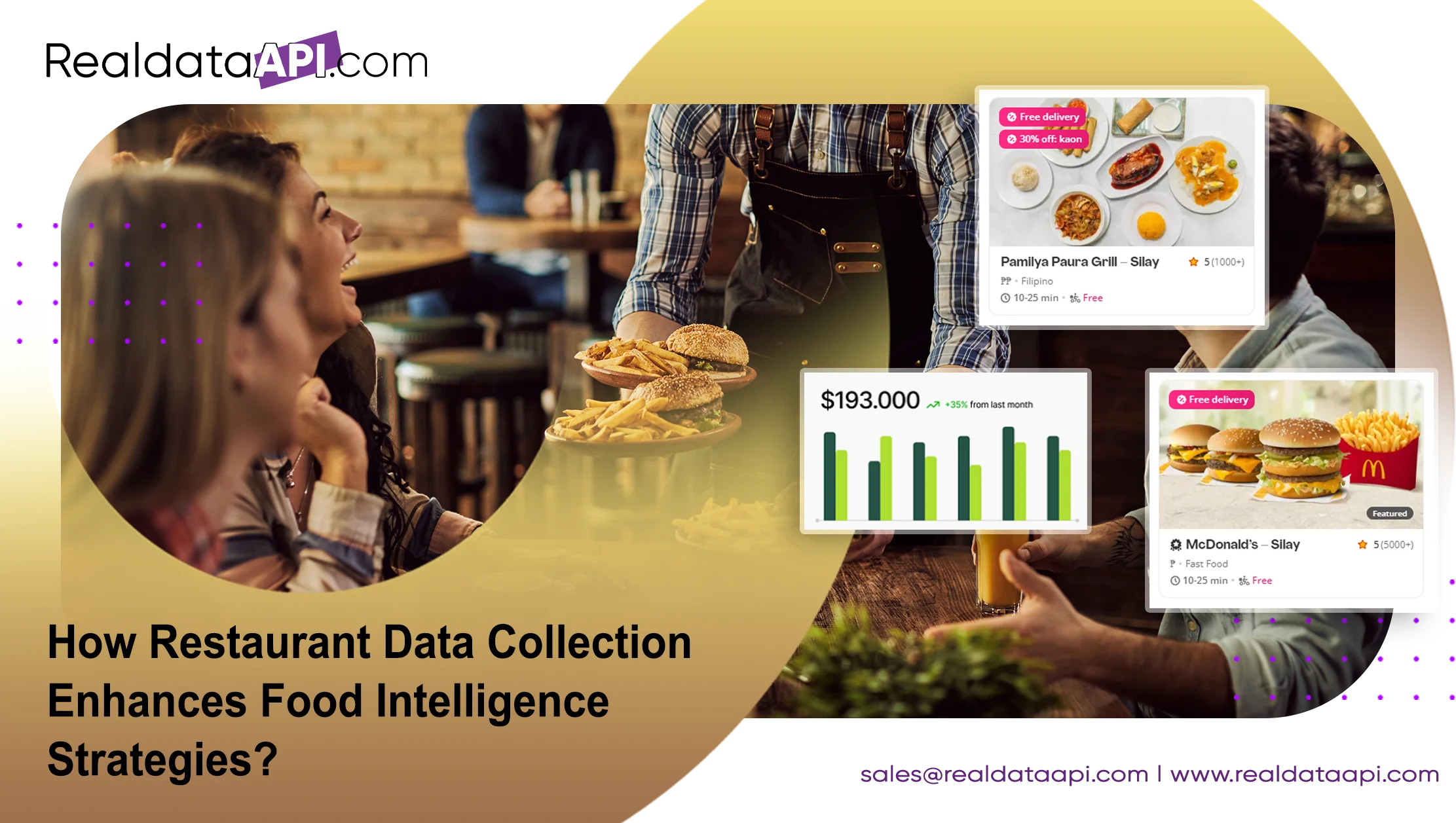
Introduction
In the highly competitive restaurant industry, staying ahead requires more than just great food and service. Understanding market trends, customer preferences, and competitor strategies is crucial. This is where restaurant data collection and food intelligence come into play. By leveraging advanced data collection techniques, including restaurant data scraping, businesses can gain valuable insights that drive strategic decisions and enhance their competitive edge. In this blog, we will explore the importance of restaurant data collection and how it can significantly boost food intelligence strategies.
The Importance of Restaurant Data Collection
1. Understanding Customer Preferences
One of the primary benefits of restaurant data collection is gaining insights into customer preferences. By collecting data on customer reviews, popular menu items, and dining habits, restaurants can tailor their offerings to meet the needs and desires of their patrons. This not only improves customer satisfaction but also helps in developing targeted marketing campaigns.
2. Market Trend Analysis
In the dynamic food industry, staying updated with market trends is essential. By scraping restaurant data, businesses can monitor emerging trends, such as popular cuisines, dietary preferences, and seasonal dishes. This information allows restaurants to adapt their menus and promotional strategies to capitalize on current trends, attracting more customers and staying relevant in the market.
3. Competitive Benchmarking
Understanding what competitors are doing is crucial for any business. Extracting restaurant data from competitors’ websites and online platforms enables businesses to benchmark their own offerings against those of their competitors. This includes analyzing menu pricing, special offers, and customer reviews. Such competitive intelligence helps restaurants identify areas for improvement and develop strategies to differentiate themselves in the market.
4. Operational Efficiency
Data collection is not only useful for customer-facing aspects but also for improving internal operations. By analyzing data on order volumes, peak hours, and inventory usage, restaurants can optimize staffing levels, manage inventory more effectively, and reduce waste. This leads to cost savings and more efficient operations.
5. Personalization and Customer Engagement
In today’s digital age, personalization is key to customer engagement. Restaurant data extraction allows businesses to gather information on individual customer preferences and behaviors. This data can be used to create personalized dining experiences, such as recommending dishes based on past orders or offering special discounts on favorite items. Personalization enhances customer loyalty and encourages repeat business.
Methods of Restaurant Data Collection
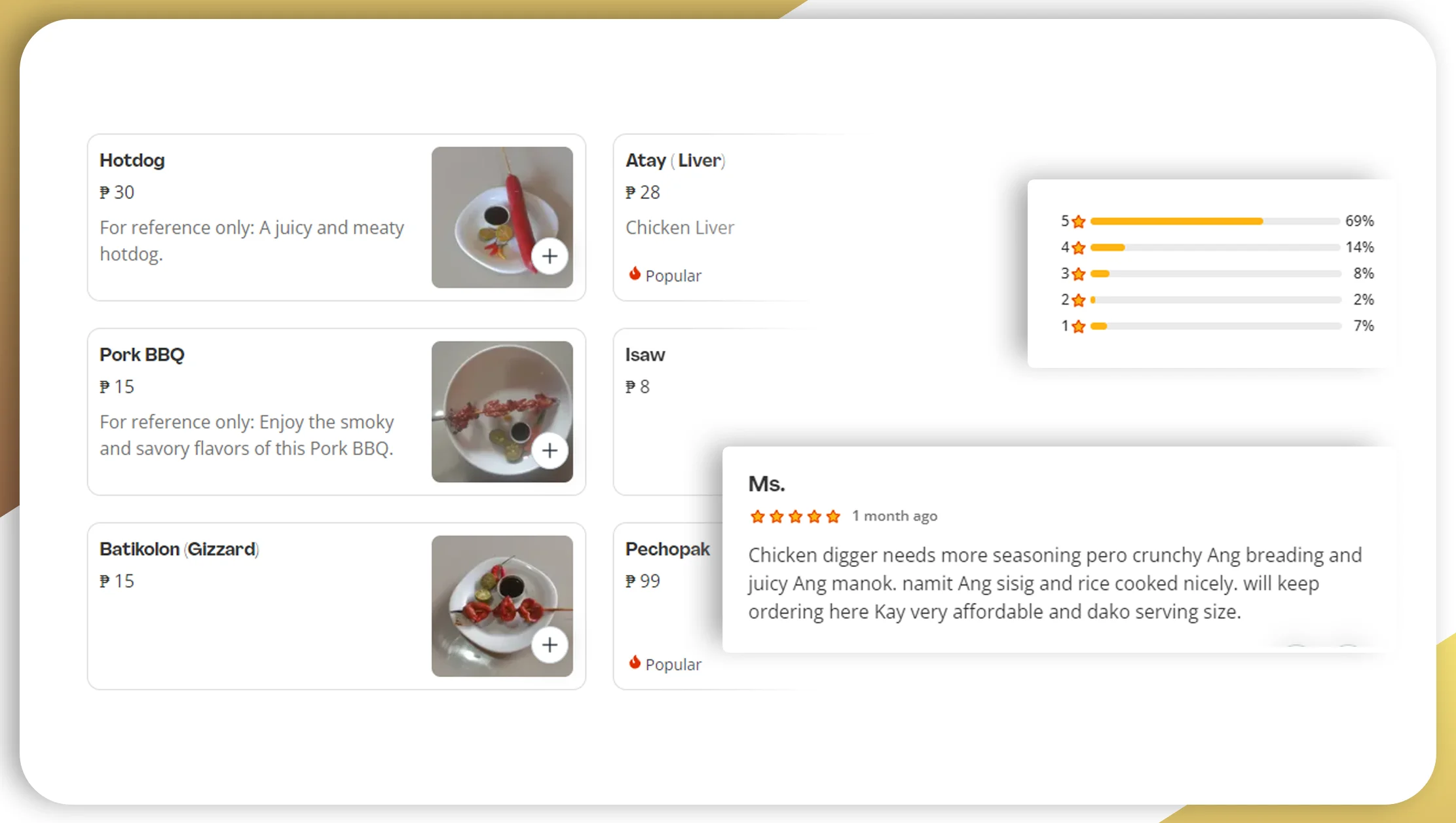
1. Manual Data Collection
While manual data collection involves physically gathering data, such as customer surveys and feedback forms, it is often time-consuming and limited in scope. However, it provides valuable qualitative insights that can complement quantitative data collected through other means.
2. Web Scraping
Restaurant data scraping involves using automated tools to collect data from websites and online platforms. This method is highly efficient and can collect large volumes of data quickly. Common data points include menu items, prices, customer reviews, and ratings. Web scraping tools, such as BeautifulSoup, Scrapy, and Selenium, are commonly used for this purpose.
Example of Web Scraping with Python
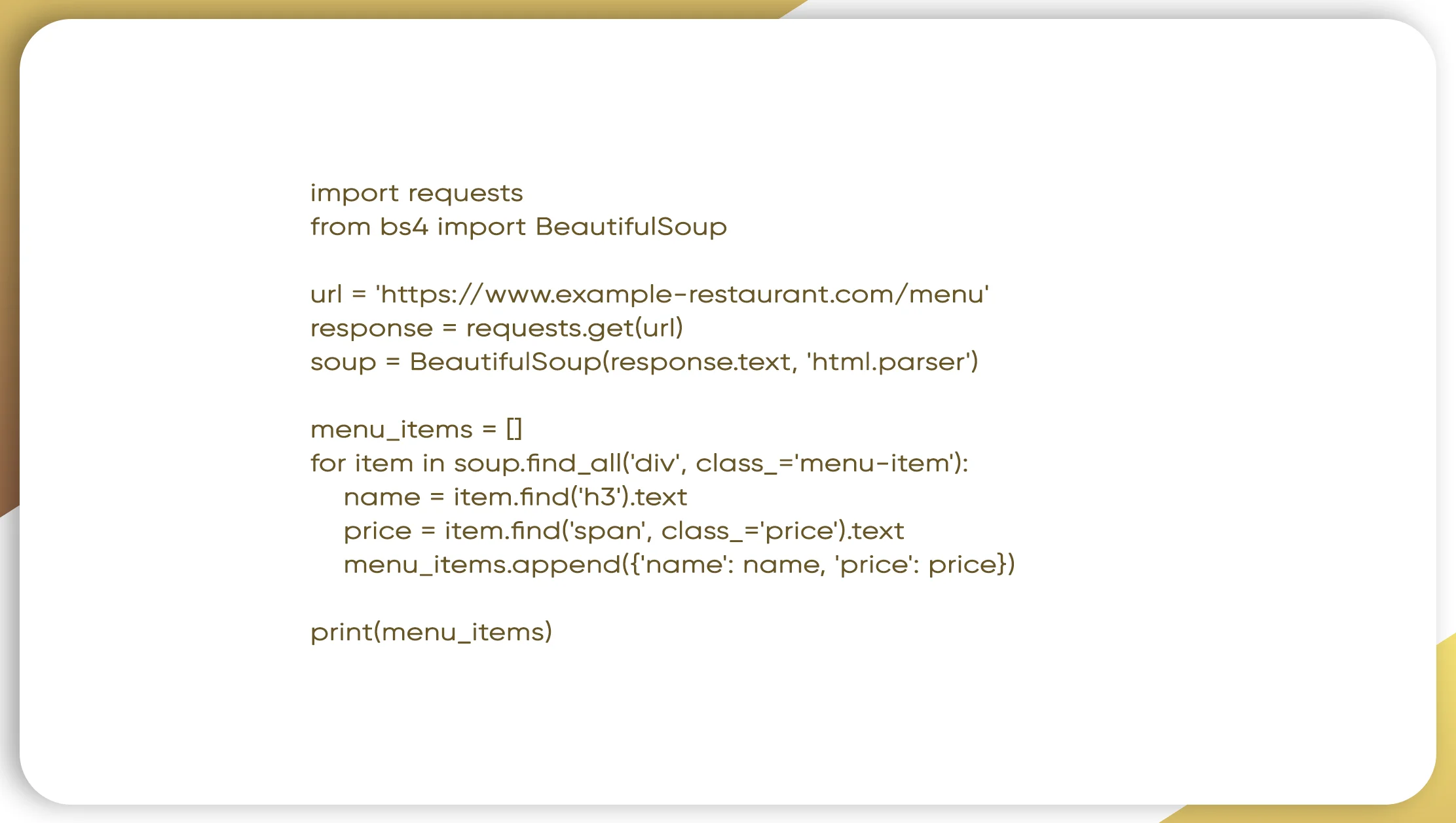
This simple script demonstrates how to scrape restaurant data from a website’s menu page, extracting item names and prices.
3. Point-of-Sale (POS) Systems
POS systems are valuable sources of data, capturing information on every transaction made in a restaurant. This includes data on what items were purchased, at what times, and by whom. Analyzing POS data provides insights into sales patterns, customer preferences, and inventory management.
4. Social Media and Review Sites
Social media platforms and review sites like Yelp and TripAdvisor are treasure troves of customer feedback and sentiment. Extracting restaurant data from these sources allows businesses to gauge public perception, identify popular menu items, and address any negative feedback proactively.
5. Mobile Apps and Online Ordering Platforms
Many restaurants use mobile apps and online ordering platforms to facilitate orders. Data from these platforms provides insights into customer ordering habits, preferred payment methods, and delivery preferences. This data is valuable for optimizing online services and improving customer experience.
Enhancing Food Intelligence Strategies with Data
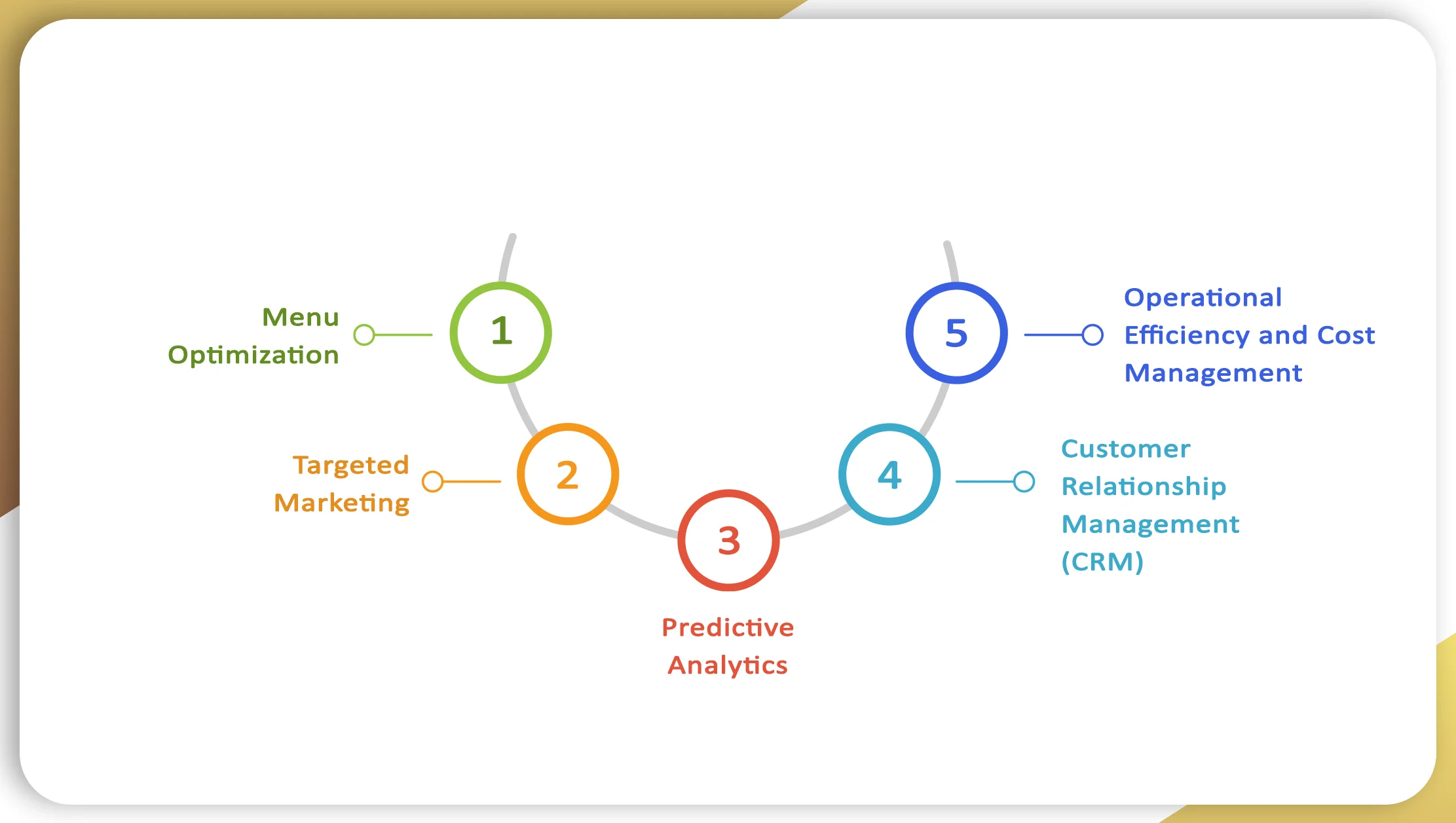
1. Menu Optimization
By analyzing data collected from various sources, restaurants can optimize their menus. This includes identifying popular dishes, adjusting portion sizes, and pricing items competitively. Menu optimization ensures that the offerings meet customer expectations and drive profitability.
2. Targeted Marketing
Data-driven insights enable restaurants to create targeted marketing campaigns. For example, if data shows a high demand for vegan dishes, a restaurant can promote its vegan menu items through social media and email marketing. Targeted marketing increases the effectiveness of promotional efforts and attracts specific customer segments.
3. Predictive Analytics
Predictive analytics involves using historical data to forecast future trends. In the restaurant industry, this can include predicting customer demand, identifying potential food shortages, and forecasting revenue. Predictive analytics helps restaurants prepare for peak times, manage inventory, and plan staffing.
4. Customer Relationship Management (CRM)
Effective CRM involves using data to build and maintain relationships with customers. By collecting data on customer preferences and behaviors, restaurants can create personalized experiences, such as sending birthday discounts or recommending new menu items based on past orders. CRM enhances customer loyalty and encourages repeat business.
5. Operational Efficiency and Cost Management
Data collection and analysis enable restaurants to streamline operations and reduce costs. For example, analyzing data on food waste can help identify inefficiencies in the kitchen, leading to more accurate ordering and portion control. Similarly, data on staffing levels and customer footfall can help optimize scheduling and reduce labor costs.
Legal and Ethical Considerations in Data Collection
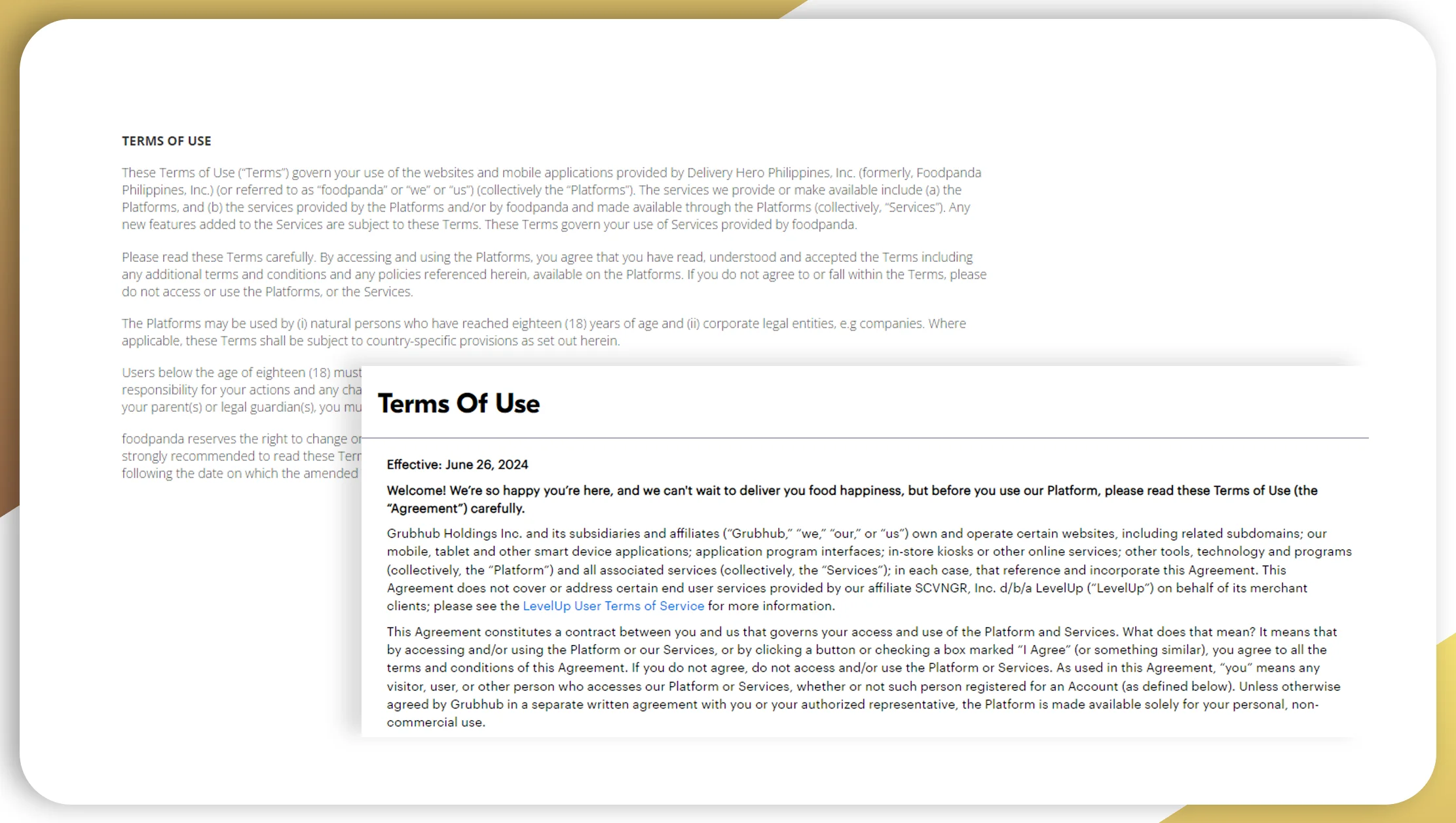
1. Compliance with Data Privacy Laws
When collecting data, especially personal data, it is essential to comply with data privacy laws such as the General Data Protection Regulation (GDPR) and the California Consumer Privacy Act (CCPA). This includes obtaining consent from customers and ensuring that data is stored and processed securely.
2. Ethical Data Collection Practices
Restaurants should adopt ethical data collection practices, such as being transparent about data collection methods and respecting customer privacy. Avoid collecting sensitive information without explicit consent and ensure that data is used solely for legitimate business purposes.
3. Respecting Website Terms of Service
When using web scraping techniques, it is important to respect the terms of service of the websites being scraped. Some websites may prohibit scraping, and violating these terms can result in legal action. Always check and comply with the rules set by the website owner.
Conclusion
Restaurant data collection is a powerful tool that can significantly enhance food intelligence strategies. By leveraging various data collection methods, including restaurant data scraping and extracting restaurant data from multiple sources, businesses can gain valuable insights into customer preferences, market trends, and operational efficiencies. These insights enable restaurants to optimize menus, target marketing efforts, improve customer engagement, and streamline operations.
As the restaurant industry continues to evolve, the ability to harness data effectively will be a key differentiator for businesses. By adopting best practices in data collection and analysis, restaurants can not only enhance their competitive edge but also provide exceptional dining experiences for their customers. Whether you are a small eatery or a large restaurant chain, investing in restaurant data extraction and analysis will undoubtedly pay off in the long run.
For businesses looking to implement robust data collection and analysis strategies, partnering with experts like Real Data API can provide the necessary tools and expertise. Our advanced solutions ensure accurate and reliable data collection tailored to your specific needs. Contact us today to extract restaurant data and drive your business forward!














